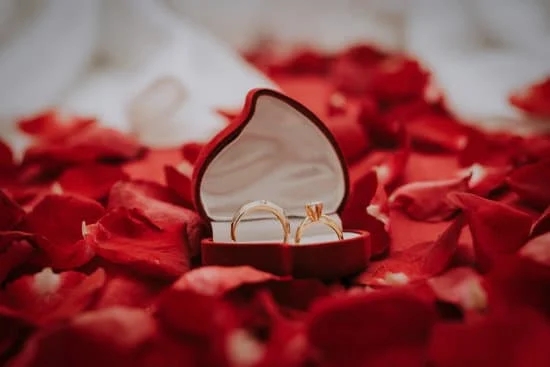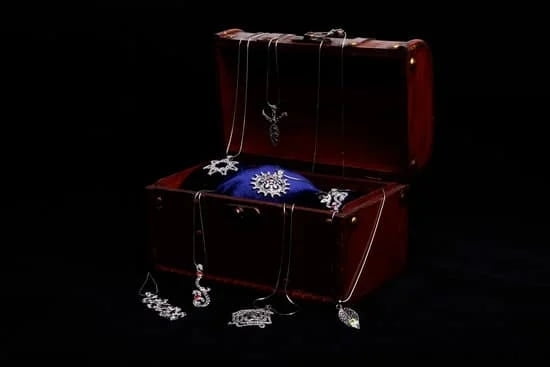Brass jewelry has a rich history that dates back centuries, originating from different cultures and civilizations around the world. This enduring metal has been a popular choice for adornment and self-expression. From its early origins to its renaissance in modern fashion, brass jewelry has evolved significantly, reflecting the changes in techniques, significance, and symbolism over time.
The history of brass jewelry can be traced back to ancient civilizations where it was used for both decorative and practical purposes. The evolution of brass jewelry in different cultures has greatly influenced its significance and symbolism, making it an integral part of traditions and rituals.
In this article, we will delve into the early origins of brass jewelry, explore its significance and symbolism in different cultures, discuss the techniques and methods of making brass jewelry, examine its sustainability and eco-friendly aspects, as well as analyze its popularity and trends in contemporary fashion. Join us on this journey through the fascinating history of brass jewelry.
Early Origins of Brass Jewelry
Brass jewelry has a rich and diverse history that dates back to ancient times, with evidence of its early origins found in various cultures around the world. The use of brass for jewelry making can be traced back to as early as the third millennium BCE, during the Bronze Age. Brass, which is an alloy of copper and zinc, was highly valued for its durability and attractive golden appearance, making it an ideal material for creating ornamental pieces.
In ancient Mesopotamia, brass jewelry was often adorned with intricate patterns and designs, reflecting the artistic and craftsmanship skills of the civilization. Similarly, in Egypt, brass jewelry was not only worn for decorative purposes but also held symbolic significance, with certain pieces being associated with religious or ceremonial rituals. In China, brass jewelry was also highly prized and played a significant role in traditional attire and adornment.
The history of brass jewelry is a testament to the creativity and ingenuity of different cultures throughout the ages. From its early origins as a precious metal to its continued evolution in various civilizations, brass jewelry has remained a timeless accessory that transcends centuries of human history. Its enduring appeal and cultural significance make it a fascinating subject for further exploration into the world of adornment and personal expression.
Evolution of Brass Jewelry in Different Cultures
Brass jewelry has a rich and diverse history that spans across various cultures and civilizations. From the early origins of brass jewelry to its evolution in different cultures, this type of jewelry has played a significant role in self-expression, adornment, and cultural symbolism.
In different cultures around the world, brass jewelry has been crafted and adorned for centuries. Here are some examples of how brass jewelry has evolved in different cultures:
- Ancient Egypt: Brass was commonly used to create intricate and ornate jewelry pieces such as necklaces, bracelets, and earrings. These pieces often featured symbolic motifs and were worn for both decorative and religious purposes.
- India: Brass jewelry has been a prominent part of Indian culture for centuries. Traditional styles such as temple jewelry, with its intricate designs and use of gemstones, continue to be popular among Indian women today.
- African cultures: Brass has been used to create bold and statement-making jewelry pieces in various African cultures. From elaborate tribal necklaces to chunky bangles, brass jewelry holds great cultural significance as a symbol of status, spirituality, or belonging within these communities.
The evolution of brass jewelry in different cultures demonstrates the versatility and adaptability of this material in creating beautiful and meaningful adornments throughout history. As we continue to explore the significance of brass jewelry in various cultural contexts, it becomes evident how this type of jewelry has transcended time and continues to hold great importance in contemporary fashion and style.
Overall, the history of brass jewelry is vast and fascinating; it spans across continents and time periods, making it an enduring symbol of cultural identity, expression, and craftsmanship.
Significance and Symbolism of Brass Jewelry
Brass jewelry has been a significant part of human adornment for centuries, and its symbolism has evolved along with its popularity. The significance of brass jewelry varies across different cultures and has been influenced by historical, religious, and societal factors.
Religious Symbolism
In many ancient civilizations, brass jewelry held religious importance. For example, in Hindu traditions, brass is considered sacred and is often used to make religious idols and ceremonial items. Similarly, in Egyptian culture, brass was associated with the sun god Ra and was used to create amulets and other symbolic jewelry.
Symbolism in Society
Throughout history, brass jewelry has also been used as a symbol of wealth, status, and power. In some cultures, wearing brass jewelry signified one’s social standing or affiliation with a certain group or tribe. Additionally, certain designs or motifs on brass jewelry were believed to offer protection or bring good fortune to the wearer.
Modern Interpretations
In contemporary fashion, the symbolism of brass jewelry has taken on new meanings. While it still holds traditional significance in some cultures, it has also become a symbol of individuality and personal style. Many people choose to wear brass jewelry as a way to express their unique identity or as a nod to the rich history and craftsmanship behind this metal.
The symbolism of brass jewelry reflects the complex tapestry of human history and culture while continuing to evolve in today’s fashion landscape.
Brass Jewelry in Ancient Civilizations
Brass jewelry has a rich and fascinating history that dates back to ancient civilizations. The use of brass in jewelry making can be traced back to as early as 3000 BC in regions such as present-day Egypt, Mesopotamia, and India. The craftsmanship and intricate designs of brass jewelry during this time period were highly esteemed and sought after, showcasing the advanced skills of ancient artisans.
One of the most notable aspects of brass jewelry in ancient civilizations was its significance and symbolism. For example, in ancient Egypt, brass jewelry was often adorned with symbols of power, protection, and religious significance. Similarly, in Mesopotamia, brass jewelry was crafted with distinct symbols that held cultural and spiritual meanings for the wearers.
The techniques and methods used in making brass jewelry during ancient times were remarkably advanced for their era. Artisans employed various methods such as casting, hammering, soldering, and engraving to create elaborate pieces of jewelry. These techniques not only demonstrate the skill and creativity of ancient metalworkers but also highlight the cultural importance placed on jewelry within these societies.
| Aspect | Data |
|---|---|
| Early Use | As early as 3000 BC |
| Significance | Adorned with symbols of power, protection, and religious significance. |
| Techniques | Casting, hammering, soldering, engraving |
Techniques and Methods of Making Brass Jewelry
Brass jewelry has a rich history that dates back thousands of years, with evidence of its use found in ancient civilizations such as the Indus Valley and Mesopotamia. The techniques and methods used to make brass jewelry have evolved over time, incorporating traditional craftsmanship with modern innovations.
Some common techniques and methods of making brass jewelry include:
- Lost-Wax Casting: This ancient technique involves creating a wax model of the jewelry piece, which is then encased in a mold. The wax is melted away and molten brass is poured into the mold to create the final piece.
- Hammering and Forging: Artisans use hammers and other hand tools to shape the brass into intricate designs. This method requires great skill and precision to create finely detailed patterns and textures.
- Etching and Engraving: Acid etching or engraving can be used to create intricate designs on the surface of brass jewelry, adding depth and visual interest to the pieces.
These methods reflect the craftsmanship and artistry that goes into creating brass jewelry, highlighting the skill and patience required to produce each unique piece. Today, modern technologies such as 3D printing have also been incorporated into the production process, allowing for even more complex designs and customization.
The techniques used to make brass jewelry have continued to evolve, blending traditional methods with contemporary advancements. This fusion of ancient artistry with modern technology has contributed to the enduring appeal of brass jewelry in today’s fashion landscape. Whether created using age-old techniques or cutting-edge machinery, brass jewelry continues to captivate wearers with its timeless beauty and enduring charm.
Renaissance of Brass Jewelry in Modern Fashion
Brass jewelry has seen a significant resurgence in modern fashion, with many people embracing this timeless and versatile metal for its unique aesthetic appeal. The revival of brass jewelry in contemporary fashion has breathed new life into this ancient art form, providing a fresh take on traditional designs and techniques.
Modern Designs and Trends
In recent years, there has been a growing trend towards minimalist and geometric designs in brass jewelry. Modern artisans are experimenting with innovative shapes and forms, creating sleek and sophisticated pieces that are both stylish and statement-making. From chunky cuffs to dainty earrings, brass jewelry is making a splash on fashion runways and in designer collections worldwide.
Collaborations With Ethical Brands
As consumers become increasingly conscious of the environmental and ethical impacts of their purchases, there has been a surge in collaborations between brass jewelry designers and sustainable brands. Many artisans are now using recycled or upcycled brass materials to create their pieces, aligning with the eco-friendly values of the modern fashion industry.
Celebrity Endorsement
Furthermore, the renaissance of brass jewelry in modern fashion can also be attributed to celebrity endorsements and social media influencers who have popularized the trend. A-list stars and fashion icons have been spotted wearing brass jewelry at red carpet events, leading to increased demand for these unique accessories.
As a result, many emerging designers are finding success by incorporating brass into their collections, attracting a whole new generation of enthusiasts who appreciate the history and craftsmanship behind this enduring metal.
The revival of brass jewelry in modern fashion speaks to the enduring appeal of this ancient art form. With its rich history, eco-friendly credentials, and contemporary designs, it is no wonder that brass jewelry continues to captivate the hearts of fashion-forward individuals around the world.
Sustainability and Eco-Friendly Aspects of Brass Jewelry
Brass jewelry has been worn for centuries and has evolved in various cultures around the world. However, in recent years, there has been a growing emphasis on sustainability and eco-friendly practices within the jewelry industry, including brass jewelry. This shift in consumer awareness has led to a reevaluation of materials and production methods used in creating brass jewelry.
In the past, the production of brass jewelry often involved the use of harmful chemicals and processes that had negative impacts on the environment. However, with the increasing demand for sustainable products, many artisanal jewelers have adopted eco-friendly practices when crafting brass jewelry. This includes using recycled brass materials, implementing non-toxic manufacturing techniques, and reducing waste during production.
Furthermore, the eco-friendly aspects of brass jewelry go beyond just the production process. The durability and long-lasting nature of brass make it a sustainable choice for consumers. Unlike other metals that require frequent replacement due to tarnishing or damage, brass jewelry can withstand the test of time with proper care. This quality not only reduces environmental impact but also promotes a more sustainable approach to personal adornment.
As consumers continue to prioritize sustainability in their purchasing decisions, the demand for eco-friendly brass jewelry continues to grow. Artisans and designers are recognizing this shift and are incorporating environmentally conscious practices into their craft, further solidifying the place of brass jewelry in the contemporary fashion landscape.
Popularity and Trends of Brass Jewelry in Contemporary Fashion
In conclusion, the history of brass jewelry is rich and diverse, with its origins dating back to ancient civilizations. Over time, brass jewelry has evolved and adapted to different cultures, each bringing its own significance and symbolism to the art form. From traditional techniques of making brass jewelry to the renaissance of its popularity in modern fashion, this metal has stood the test of time as a sustainable and eco-friendly option in the world of accessories.
In today’s contemporary fashion scene, brass jewelry has seen a resurgence in popularity and continues to be on-trend. Its versatility and ability to be manipulated into various styles and designs have made it a favorite among designers and consumers alike. With an emphasis on sustainability and eco-friendly practices in the fashion industry, brass jewelry offers a viable alternative to other metals without compromising style or quality.
As we continue to embrace the beauty and history of brass jewelry, it is evident that this art form will remain relevant in contemporary fashion trends. Whether it’s through traditional craftsmanship or innovative design techniques, brass jewelry has proven itself to be timeless, reflecting both our past and our present. The allure of brass jewelry lies not only in its aesthetic appeal but also in its enduring legacy throughout history.
Frequently Asked Questions
When Was Brass Used in Jewelry?
Brass has been used in jewelry for centuries, with records of its use dating back to ancient civilizations such as the Egyptians and Romans. Its durability and attractive golden color have made it a popular choice for creating jewelry pieces.
What Does Brass Symbolize in Jewelry?
In jewelry, brass symbolizes strength, courage, and protection. It is often associated with the sun due to its color, which can represent vitality and positivity. Additionally, brass is believed to bring good luck and ward off negative energy when worn as jewelry.
What Are the Spiritual Benefits of Wearing Brass?
From a spiritual perspective, wearing brass jewelry is said to have several benefits. It is believed to promote healing by helping to reduce inflammation and joint pain. Brass is also thought to enhance courage and provide protection from negative influences, making it a popular choice for those seeking spiritual empowerment and strength.

Welcome to my jewelry blog! My name is Sarah and I am the owner of this blog.
I love making jewelry and sharing my creations with others.
So whether you’re someone who loves wearing jewelry yourself or simply enjoys learning about it, be sure to check out my blog for insightful posts on everything related to this exciting topic!





